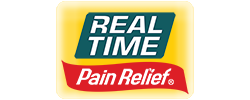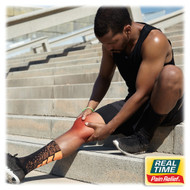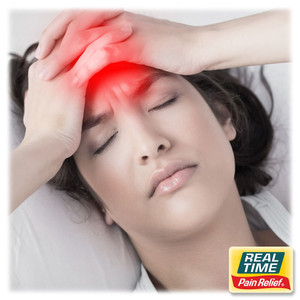7 Relief Tips for Joint Pain
7th Sep 2022
Dealing with joint pain? Here are 7 tips to help you get relief!
Joint pain can occur due to an injury or inflammation from any part of the joint, such as the tendon, ligament, or bone. At one time or another, most adults will have at least mild joint pain. In fact, joint pain is one of the most common types of discomfort. Pain can range from mild to debilitating.
Causes of Joint Pain
There are dozens of causes of joint pain. Everything from autoimmune disorders to overuse injuries can lead to joint issues. But some of the more typical causes include the following:
Arthritis:
Arthritis is one of the most common causes of joint pain. There are several types of arthritis including rheumatoid and infectious. But the most frequent form of arthritis is osteoarthritis, which occurs due to wear and tear on the joint over time. Arthritis can affect any joint and often occurs in the knees, hip, and back.
Bursitis:
Bursa are fluid-filled sacs that act as a cushion between the muscles, tendons, and joints. When the bursa becomes irritated and inflamed, often due to overuse, the joint can become painful. Bursitis is most common in elbow, shoulder, and hip.
Gout:
Gout can occur if uric acid in the body becomes too high. The acid may lead to the formation of crystals in the joint, which in turn causes inflammation and pain. Any joint can be affected, but the joints of the feet are the most common location affected by gout pain.
Fibromyalgia:
Fibromyalgia is a condition that involves widespread musculoskeletal pain, which often includes the joints. It also leads to additional symptoms including fatigue, memory problems, and trouble sleeping. The exact cause of the condition is not fully understood, but it appears people with fibromyalgia may process pain signals differently than people without the condition.
Symptoms of Joint Pain
Symptoms of joint pain may come and go and be worse with certain activities. The quality of the pain might also vary. For example, joint pain may be achy or dull pain. Depending on the cause of joint pain, additional symptoms may also be present. Symptoms may include the following:
- Joint stiffness
- Decreased or limited range of motion
- Swollen joints
In some cases, joint pain may make doing certain activities, such as climbing the stairs difficult.
Joint pain is diagnosed after a physical exam. Your doctor will also ask about symptoms and your medical history. Often an x-ray or CT scan is also performed to determine the cause of joint pain.
7 Relief Tips for Joint Pain
Treatment for joint pain may depend on the underlying cause. Mild to moderate joint pain is often treatable at home with self-care. The following treatments may help reduce joint pain:
#1) Take a warm bath and add a pain-relieving bath bomb
Select a pain-relieving bath bomb that is made with arnica, which may help with the discomfort. Other beneficial ingredients to look for include Epsom salt, chamomile, willow bark, wasabi extract, etc. Fill a bathtub with warm to hot water and add the bath bomb. Soak for about twenty minutes.
#2) Apply a TENS unit
TENS stands for transcutaneous electrical nerve stimulation, and it can be useful for decreasing various types of pain including joint pain. It involves using a device that sends an electrical current to the nerves. By stimulating the nerve endings, it may decrease pain signals sent to the brain.
#3) Do light exercise
If you have painful joints, exercise may not be your top priority. But light exercise can improve muscle strength around the joint and may help maintain flexibility and range of motion. Avoid joint-jarring activities, such as running or jumping. Instead, do exercises that are gentle to your joints, such as yoga, swimming, and stretches.
#4) Take a joint supplement
Joint supplements are a great option to keep your joints as healthy as possible. Joint supplements that contain ingredients such as Ginger Root Extract and Boswellia Serrata Gum Extract from ApresFlex can help to improve joint comfort, flexibility and mobility, and support joint structure. Other ingredients to look for include MSM, turmeric root extract, and hydrolyzed collagen.
#5) Eat Omega 3’s
Omega 3 fatty acids are good for your overall health. They may also help treat joint pain. Some studies have indicated that omega 3’s may decrease joint discomfort and stiffness. Foods high in omega 3 includes flaxseeds, salmon, and walnuts.
#6) Add a little turmeric to foods
Turmeric is a spice used in a variety of foods. It contains the chemical curcumin, which is thought to have anti-inflammatory properties. Consider adding a little of this spice to some of your dishes.
#7) Try heat therapy
Heat may help increase circulation and relax muscles. When it comes to joints, heat may have the same effect. It may improve blood flow and decrease pain and stiffness. Plus, as long as you are careful not to burn yourself, there are no side effects. Apply a heating pad or a warm towel to the sore joint for about 10 to 15 minutes a few times a day.
Pain Relief You Can Trust®Since 1998
For over 20 years, families across the U.S. have turned to Real Time’s lotions and creams for PAIN RELIEF YOU CAN TRUST®. From Lifestyle Essentials, through our Nujuvena line, to Pain Relief Formulas, Real Time has you covered. LEARN MORE
Sources:





